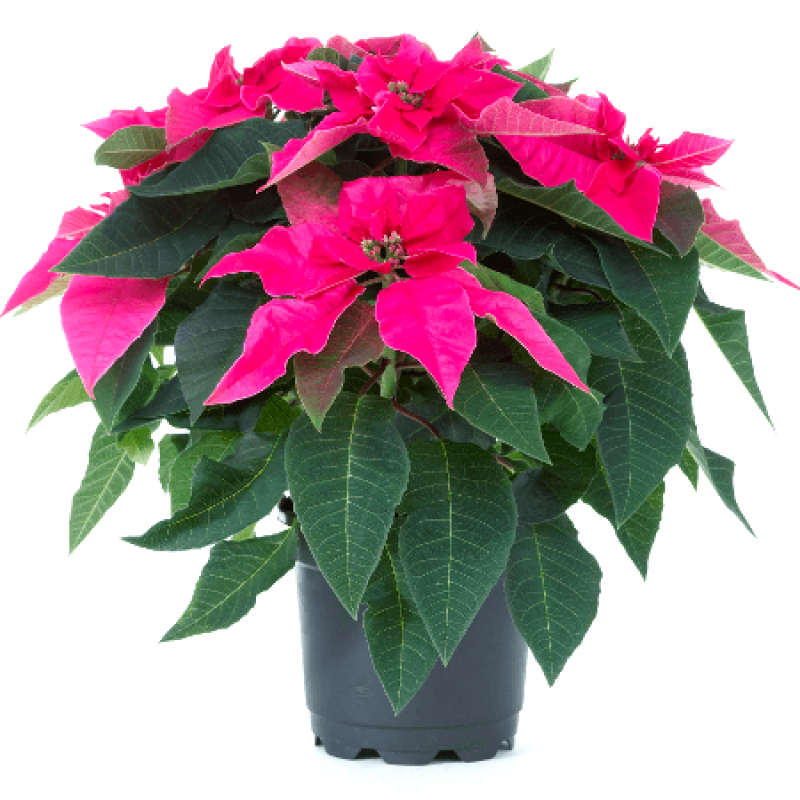Poinsetta
The poinsettia (/pɔɪnˈsɛtiə/ or /pɔɪnˈsɛtə/)[1][2] (Euphorbia pulcherrima) is a commercially important plant species of the diverse spurge family (Euphorbiaceae). Indigenous to Central America, it was described as a new species in 1834. It is particularly well known for its red and green foliage and is widely used in Christmas floral displays. It derives its common English name from Joel Roberts Poinsett, the first United States Minister to Mexico, who is credited with introducing the plant to the US in the 1820s. Poinsettias are shrubs or small trees, with heights of 0.6–4 m (2.0–13.1 ft). Though often stated to be highly toxic, the poinsettia is not dangerous to pets or children. Exposure to the plant, even consumption, most often results in no effect, though it can cause nausea, vomiting, or diarrhea.Euphorbia pulcherrima is a shrub or small tree, typically reaching a height of 0.6–4 metres (2–13 ft). The plant bears dark green dentate leaves that measure 7–16 centimetres (2.8–6.3 in) in length. The colored bracts—which are most often flaming red but can be orange, pale green, cream, pink, white, or marbled—are often mistaken for flower petals because of their groupings and colors, but are actually leaves.[9][10] The colors of the bracts are created through photoperiodism, meaning that they require darkness (at least fourteen hours at a time for 6–8 weeks in a row) to change color. The plants also require abundant light during the day for the brightest color.[11]
The flowers of the poinsettia are unassuming and do not attract pollinators. They are grouped within the cyathia (small yellow structures found in the center of each leaf bunch, or false flowers).[9] Nothing is known about pollination in wild poinsettias, though wasps are noted to occasionally visit the cyathia.[12]


No hay comentarios:
Publicar un comentario